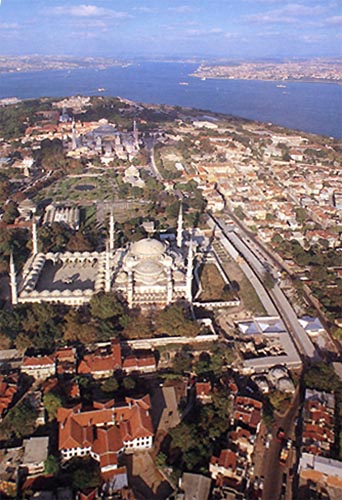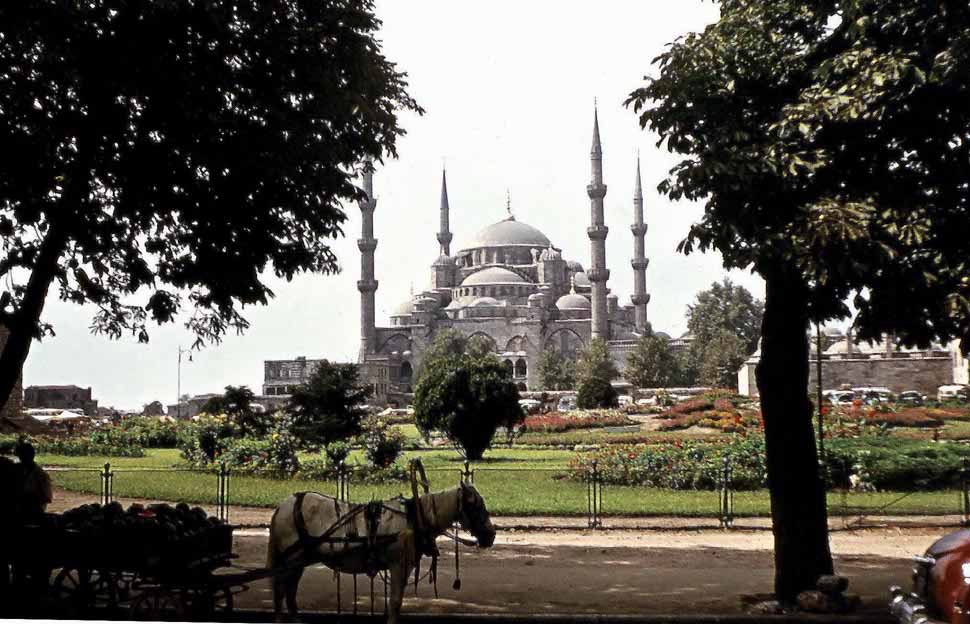Sultan Ahmed - Blue Mosque 1609 - 1619 - History of Islamic Architecture (sitios de interés)
Descripción del sitio
Istanbul
Sultan Ahmed Mosque
1609 - 1619
Architect Sedefkar Mehmed Aga

Sultan Ahmed Mosque seen from the Agia Sofia (photos Rolf Gross 1954)


Interior view of one of the four massive columns and the blue tiles that give the mosque its name. The difference in the dynamic structure between Sinan and Mehmed Aga are clearly visible. This dome sits solidly on its four feet and is no match to the stuctural elegance of Sinan's creations. The beautiful tiles distract and hide its architectural details. It seems, after all, justified to call it the Blue Mosque.

Text and last two images from Archnet.org